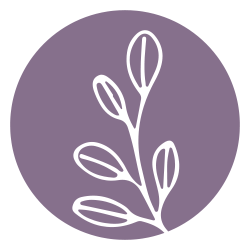Acupressure Points for Self-Care: A Natural Approach to Healing
What Is Acupressure?
Acupressure is an ancient healing practice rooted in Traditional Chinese Medicine (TCM). It involves applying pressure to specific points on the body, known as acupoints, to stimulate energy flow (Qi) and promote natural healing. Unlike acupuncture, which uses needles, acupressure relies on fingers, palms, or tools to provide relief from common ailments.
Modern studies have shown that acupressure can be effective in alleviating pain, reducing stress, and improving overall well-being. Research from the Journal of Pain Research (2023) suggests that acupressure can significantly reduce chronic pain and tension headaches. Additionally, a 2024 study in Integrative Medicine Reports found that acupressure can improve sleep quality and reduce anxiety.
Below, we explore essential acupressure points categorized by condition, along with step-by-step instructions for self-care.
Headache Relief
LI-4 (Hegu) - Between the thumb and index finger.
GB-20 (Feng Chi) - Base of the skull, in the hollows on either side of the neck.
Yintang (Third Eye Point) - Between the eyebrows.
How to Apply
Press LI-4 firmly for 30-60 seconds, then switch hands. Avoid if pregnant.
Use thumbs to apply gentle pressure to GB-20 for about a minute.
Lightly press Yintang with your index finger for a calming effect.
Why It Works
These points help release tension, improve circulation, and relieve stress-related headaches.
Neck Pain and Stiffness
GB-20 (Feng Chi) - Base of the skull.
SI-3 (Houxi) - On the outer edge of the hand, near the pinky.
LI-4 (Hegu) - Between thumb and index finger.
How to Apply
Massage GB-20 with circular motions for 1-2 minutes.
Apply firm pressure to SI-3 on both hands for 30 seconds each.
Press LI-4 for additional pain relief.
Why It Works
These points improve blood flow, relieve tension, and enhance flexibility in the neck.
Shoulder Pain and Tension
LI-15 (Jianyu) - On the outer edge of the shoulder.
SI-9 (Jianzhen) - Near the back of the shoulder joint.
GB-21 (Jianjing) - Midway between the neck and shoulder.
How to Apply
- Apply steady pressure to LI-15 and SI-9 for 30 seconds each.
- Firmly press GB-21 for 30-60 seconds, but avoid if pregnant.
Why It Works
These points relieve tension, improve mobility, and reduce inflammation.
Nausea and Digestive Issues
PC-6 (Neiguan) - Three finger-widths below the wrist on the inner forearm.
ST-36 (Zusanli) - Four finger-widths below the kneecap, slightly to the outside of the shin.
How to Apply
Press PC-6 with the thumb for 1-2 minutes to relieve nausea.
Stimulate ST-36 for digestive support.
Why It Works
PC-6 is widely used for motion sickness and nausea, while ST-36 supports digestion.
Flu and Immune Support
LI-11 (Quchi) - On the outer elbow crease.
ST-36 (Zusanli) - Below the kneecap, near the shin.
LU-9 (Taiyuan) - On the wrist, near the thumb.
How to Apply
Massage LI-11 and ST-36 for 30-60 seconds each.
Press LU-9 gently to support lung health.
Why It Works
These points enhance circulation, support the immune system, and reduce cold symptoms.
Lower Back Pain
B-23 (Shenshu) - Two finger-widths away from the spine, at waist level.
GV-4 (Mingmen) - Lower back, along the spine.
LI-4 (Hegu) - Between thumb and index finger.
How to Apply
Apply pressure to B-23 using your fists or thumbs.
Massage GV-4 in circular motions for 1-2 minutes.
Press LI-4 for additional pain relief.
Why It Works
These points reduce inflammation, improve flexibility, and support kidney health.
Actionable Takeaways
Acupressure can be easily incorporated into daily self-care.
Applying pressure for 30 seconds to 2 minutes can provide relief.
Be consistent-regular acupressure helps maintain long-term benefits.
Avoid acupressure on LI-4 and GB-21 during pregnancy.
If symptoms persist, consult a healthcare professional.
Further Reading
The Healing Power of Acupressure and Acupuncture by Matthew Bauer
Acupressure's Potent Points by Michael Reed Gach
Journal of Pain Research (2023) - Study on acupressure for chronic pain
Integrative Medicine Reports (2024) - Research on acupressure for sleep and anxiety
Ready to take the first step? Schedule a consultation with Jill today!


